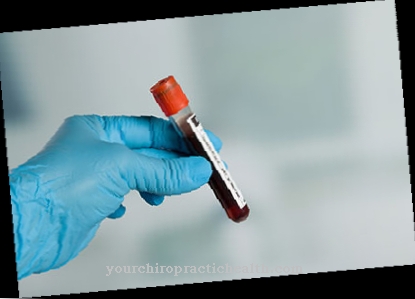The Mirror Syndrome is a clinical picture that can manifest itself during pregnancy. The cardinal symptoms are edema, fetal hydrops, and maternal high blood pressure. Various underlying diseases can be considered as the cause, on which the therapy of the syndrome depends.
What is mirror syndrome?

© Igor Borodin - stock.adobe.com
Mirror syndrome is a range of symptoms that women can experience during pregnancy. The core symptoms are water retention in the mother's body (edema) and in the fetus (hydrops). The disease is very rare: the specialist literature describes significantly fewer than 100 cases.
However, researchers believe that practicing doctors often fail to diagnose Mirror Syndrome as such. Since water retention in the legs - especially in the calves and feet - is very common in women during pregnancy, they usually do not arouse suspicion. In addition, the clinical picture is very similar to the appearance of similar syndromes.
The mirror syndrome goes back to the English word for "mirror". The clinical picture owes its name to the fact that the maternal edema and the fetal hydrops reflect each other. The Scottish doctor John Williams Ballantyne was the first to describe the disease. This is why the term Ballantyne syndrome occasionally appears in the specialist medical literature.
causes
There are various possible causes of the Mirror Syndrome. The exact mechanisms that lead to the development of the disease require further research. A potential cause of Mirror Syndrome is Rh incompatibility. The rhesus factor is a property of the blood. In Rh-positive people, the red blood cells have the Rhesus factor antigen.
If rhesus-positive and rhesus-negative blood mix, an immune reaction occurs and the body mistakenly breaks down the red blood cells. Normally the bloodstream of the mother and the unborn child are separated from one another by the placental barrier; red blood cells are too big to cross this barrier. However, minimal injuries, infections and other circumstances can increase the permeability of the placental barrier, so that maternal and fetal blood come into direct contact.
In this way, the rhesus incompatibility leads to hemolytic (blood-dissolving) anemia. Mirror syndrome is merely a symptomatic consequence. Another possible cause of Mirror Syndrome is viral infections and malformations. They can mean that the organism stores water or cannot pump penetrating fluid out of the tissue.
In addition, the fetofetal transfusion syndrome is a possible underlying disease in Mirror syndrome. This is a blood flow and nutritional disorder that can occur in identical twins. Usually it causes one of the twins to develop worse.
Symptoms, ailments & signs
The simultaneous occurrence of water retention in the mother and the fetus is characteristic of Mirror syndrome. The mother's edema can vary in severity - as can the hydrops in the fetus. There is no specific threshold. Pregnant women with Mirror Syndrome also have high blood pressure (hypertension).
This may manifest itself as headache, dizziness, nausea, nosebleeds and difficulty sleeping. Particularly in particularly severe cases, visual disturbances, severe thirst and difficulty breathing can also occur. In many cases, however, high blood pressure has no noticeable symptoms.Many of these complaints also show up independently during pregnancy, which makes it difficult to diagnose Mirror Syndrome.
Another sign of the disease is excessive excretion of proteins in the urine (proteinuria). Around 20 percent of all women suffer from proteinuria during pregnancy; mirror syndrome, on the other hand, is much rarer. The occurrence of a single symptom therefore does not necessarily mean that the mirror syndrome is present.
Diagnosis & course of disease
Doctors diagnose Mirror Syndrome by doing careful examinations to prove each symptom. At least one ultrasound examination is required to determine the fetal hydrops. The swollen tissue is often visible on the ultrasound image. To diagnose proteinuria, pregnant women collect their urine over a period of 24 hours.
The laboratory can then determine the amount of protein in the urine collection. The normal range is 50–150 mg. Doctors must exclude preeclampsia from a differential diagnosis. Gestation poisoning can cause symptoms similar to those of Mirror Syndrome. Furthermore, doctors have to rule out any confusion with the HELLP syndrome. Correct diagnosis is a prerequisite for effective treatment.
Complications
Mirror syndrome itself is a complication in pregnancy. It occurs very rarely and can usually only be treated by terminating the pregnancy. Very often the child's life cannot be saved. The mother's complaints only improve if the causes of dropsy and polyhydramnios can be eliminated.
The prognosis for the child depends on the gestational age and the underlying disease. Premature death of the unborn child is also possible. The risk of more serious complications increases with the length of pregnancy. It is therefore necessary for the life of the mother and in some cases also for the child to initiate the termination of pregnancy or the premature birth immediately.
Because of the good medical care, surviving children are less likely to suffer from long-term damage than before. However, it can also be caused by a hereditary malformation. In these cases, the surviving child always suffers from a disability. Rare complications in the mother are a sharp drop in hemoglobin, circulatory collapse and heart failure.
These complaints are often associated with the death of the embryo. Right heart failure can also lead to pulmonary edema and pleural effusions, which can also be fatal. Due to the different causes and the rarity of the mirror syndrome, no general statement about the prognosis of this complication is possible.
When should you go to the doctor?
As a rule, if mirror syndrome occurs, the mother-to-be must definitely consult a doctor and have treatment carried out. Unfortunately, in most cases the treatment ends with the termination of the pregnancy, so that the child can no longer be saved. In many cases, the unborn child dies very early. If the pregnancy is already advanced, the doctor must initiate a premature birth in the case of Mirror syndrome. This will save the mother's life and the child's life. Urgent treatment is necessary because mirror syndrome can lead to very serious complications.
The mother should see the doctor if symptoms of Mirror syndrome occur during pregnancy. These include, for example, severe headaches, dizziness and nosebleeds. Visual disturbances and sleep disorders can also occur. The mirror syndrome is particularly noticeable as a strong thirst and difficulty breathing. If these symptoms occur during pregnancy, a doctor must be consulted.
Treatment & Therapy
Treatment for Mirror Syndrome depends on the underlying condition. A blood transfusion may be required to treat rhesus incompatibility. The pregnant woman receives blood from a donor. The blood transfusion can, to a limited extent, replace the red blood cells that the body mistakenly broken down during hemolysis. Intensive medical care is often necessary for the child after birth.
Since fluid can also have accumulated in the lungs, breathing may need artificial support. Water can also accumulate in the cavities of the heart. Puncturing the affected tissue and other possible measures will help remove the excess fluid. The newborn may also need a blood transfusion.
Depending on the state of health of the mother and the child, it can be advisable in the case of Mirror Syndrome for the birth to take place as early as possible. In normal cases, an early birth is associated with higher risks: With Mirror Syndrome, however, the risks of premature birth may be lower than the risks associated with a normal pregnancy in this clinical picture. Doctors and parents have to weigh up what is best for mother and child in each individual case.
Outlook & forecast
As a complication of pregnancy, mirror syndrome is extremely worrying. Fortunately, it is very rare because, even today, it can often only be treated by terminating the pregnancy. Unfortunately, the child's life cannot be saved and the mother's complaints only disappear if the triggers of polyhydramnios and dropsy can be eliminated. The prognosis for the unborn baby depends on the month of pregnancy and the underlying disease pattern.
In most cases, the baby dies prematurely, because the longer the risk pregnancy, the more severe the complications. It is therefore imperative for the life of mother and child to decide whether to terminate the pregnancy or give birth prematurely. If the baby survives this step, the prospects are relatively good these days thanks to improved medical care, as late-stage damage occurs less often.
If a hereditary disease is the cause of Mirror Syndrome, the newborn is very likely to be disabled. Mirror syndrome does not only have dire consequences for the baby, the mother also suffers complications such as a sharp drop in her hemoglobin level, a circulatory collapse or heart failure. These symptoms are often related to the immediate loss of the embryo.
If there is also right heart failure, the pregnant woman can experience pleural effusions or pulmonary edema, both of which can be fatal. From a medical point of view, however, due to the different triggers and the small number of known cases, no binding statement can be made about the prognosis of the mirror syndrome without examining the person affected.
prevention
Since mirror syndrome is not an independent disease, but a consequence of various causes, general prevention is not possible. The complications resulting from rhesus incompatibility can often be controlled with medication before Mirror syndrome develops.
Aftercare
Because mirror syndrome treatment is relatively complex and lengthy, follow-up care focuses on managing the condition safely. Those affected should try to build a positive attitude despite the adversity. Relaxation exercises and meditation can help calm and focus the mind.
With Mirror Syndrome, various complications and complaints occur, which can usually always have a very negative effect on the life and quality of life of the person concerned. The sleep problems that occur can lead to irritation in the patient. Not infrequently, the mirror syndrome is also associated with psychological moods or even depression. This should be clarified with a psychologist. Occasionally, accompanying therapy can help to better accept the difficult situation.
You can do that yourself
Since there is no causal therapy, the sick women should focus on their mental state. Due to the specific consequences of the mirror syndrome, the fruit of the womb can die, including deaths. This fact is difficult to cope with for parents-to-be. It can therefore be advisable to seek help from advice centers. Couples therapy may also be advisable if difficulties arise in a relationship. Because cohesion in partnership is particularly important.
In addition, the women concerned should pay more attention to the basic rules of conduct during pregnancy. Sudden movements should be avoided, especially towards the end of pregnancy.
It is also helpful to lead a healthy lifestyle. It is true that this does not lead to a causal reduction in the risk of complications. However, a healthy lifestyle leads to a noticeable strengthening of the body, which improves wound healing abilities and physical resilience.


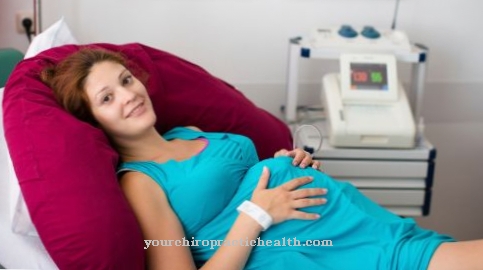

.jpg)

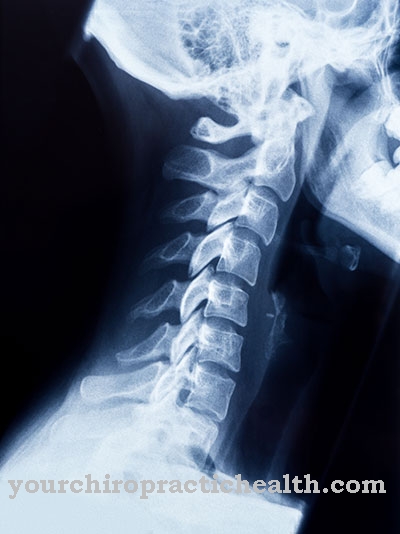






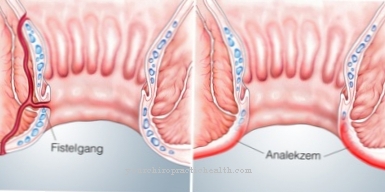

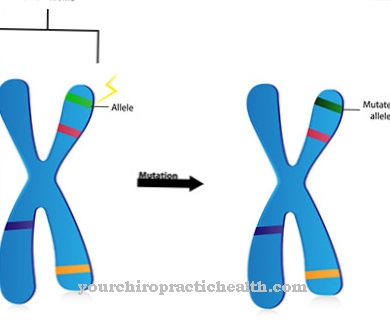
.jpg)




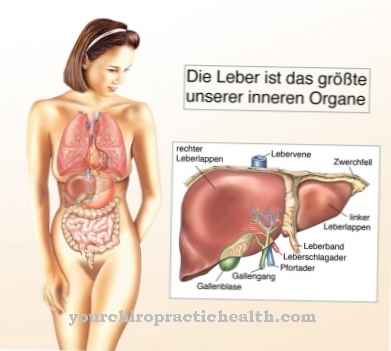

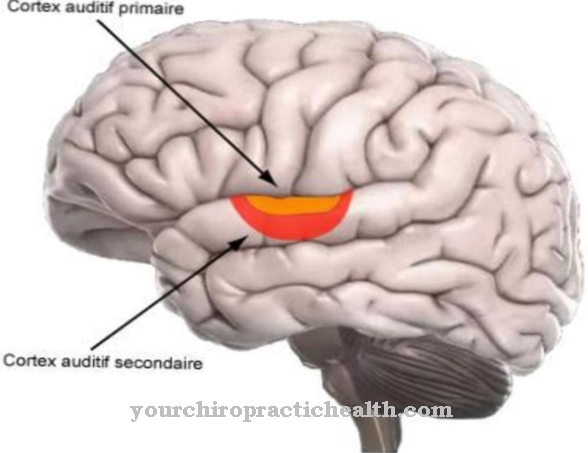
.jpg)


